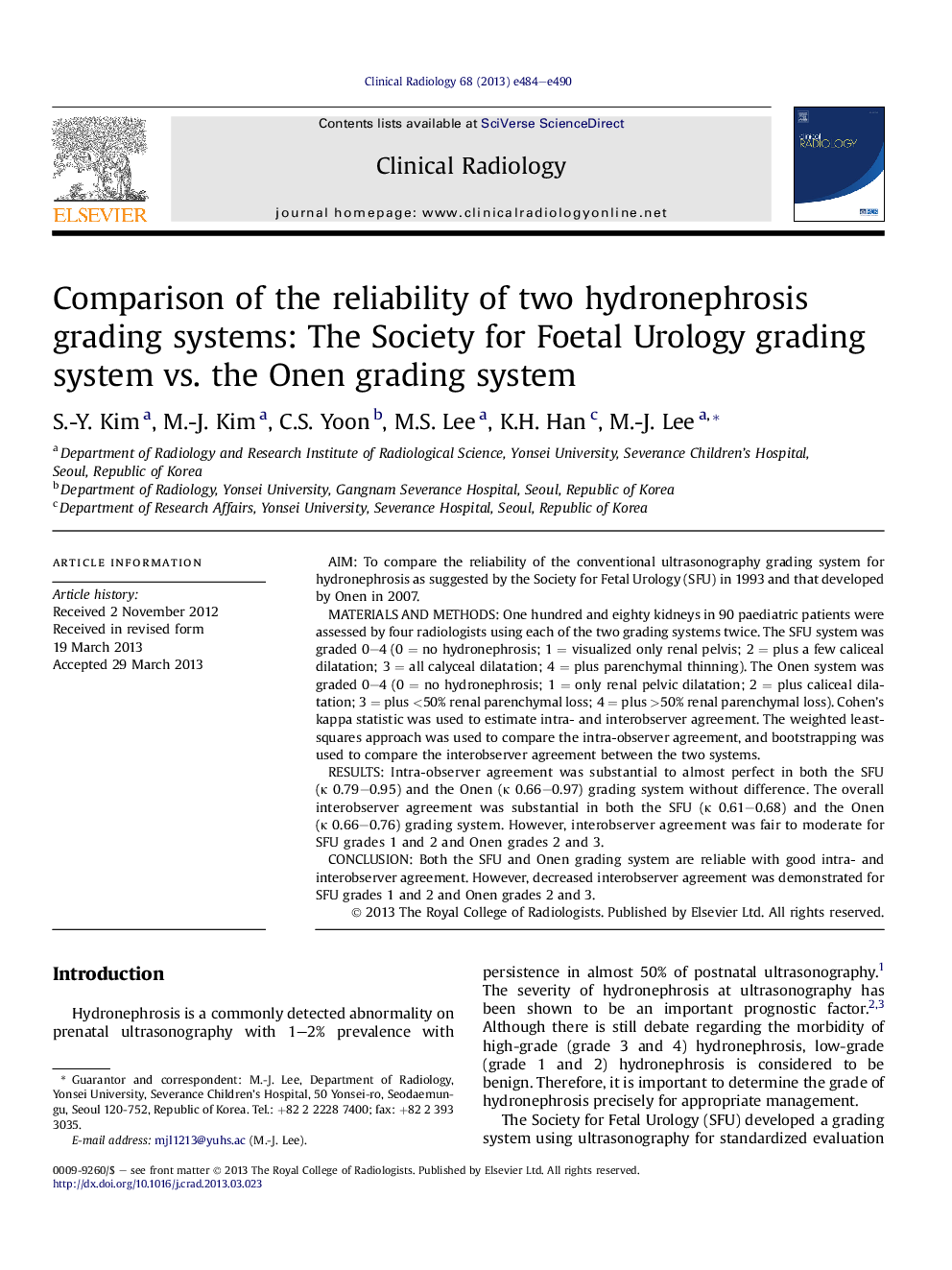| Article ID | Journal | Published Year | Pages | File Type |
|---|---|---|---|---|
| 3982554 | Clinical Radiology | 2013 | 7 Pages |
AimTo compare the reliability of the conventional ultrasonography grading system for hydronephrosis as suggested by the Society for Fetal Urology (SFU) in 1993 and that developed by Onen in 2007.Materials and methodsOne hundred and eighty kidneys in 90 paediatric patients were assessed by four radiologists using each of the two grading systems twice. The SFU system was graded 0–4 (0 = no hydronephrosis; 1 = visualized only renal pelvis; 2 = plus a few caliceal dilatation; 3 = all calyceal dilatation; 4 = plus parenchymal thinning). The Onen system was graded 0–4 (0 = no hydronephrosis; 1 = only renal pelvic dilatation; 2 = plus caliceal dilatation; 3 = plus <50% renal parenchymal loss; 4 = plus >50% renal parenchymal loss). Cohen's kappa statistic was used to estimate intra- and interobserver agreement. The weighted least-squares approach was used to compare the intra-observer agreement, and bootstrapping was used to compare the interobserver agreement between the two systems.ResultsIntra-observer agreement was substantial to almost perfect in both the SFU (κ 0.79–0.95) and the Onen (κ 0.66–0.97) grading system without difference. The overall interobserver agreement was substantial in both the SFU (κ 0.61–0.68) and the Onen (κ 0.66–0.76) grading system. However, interobserver agreement was fair to moderate for SFU grades 1 and 2 and Onen grades 2 and 3.ConclusionBoth the SFU and Onen grading system are reliable with good intra- and interobserver agreement. However, decreased interobserver agreement was demonstrated for SFU grades 1 and 2 and Onen grades 2 and 3.
